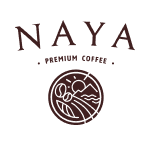Coffee isn't merely a drink; it's a sensory experience steeped in history, culture, and craftsmanship. We're not talking about your average cup that serves only to kickstart your morning; this is about specialty coffee.
To fully appreciate this craft, one must delve into its meticulous cultivation, precise roasting, and the nuanced art of brewing. So, grab your favorite cup, sit back, and come along on a journey that traces the life of a specialty coffee bean from its humble origins to its ultimate form—a steaming, aromatic cup of liquid gold.
Part 1: The Meticulous Cultivation—The Foundation of Specialty Coffee
Geography: Where 'Terroir' Becomes Tangible
- High Elevations: A higher altitude often results in coffee beans that are denser and packed with nuanced flavors.
- Climate Conditions: Ideal climates oscillate between sunny and rainy periods, creating the perfect setting for coffee cherries to mature slowly.
- Soil composition in coffee-growing regions, rich in essential minerals and organic matter, directly influences the bean's nutrient uptake, thereby playing a pivotal role in developing the coffee's unique flavor profile, aroma, and overall quality.
The Right Coffee Species and Varieties
- Arabica vs. Robusta: Arabica beans are more acidic and contain less caffeine, but they offer a range of complex flavors that Robusta cannot match.
- Varietals: From Geisha to Bourbon, different varietals provide unique flavors—floral, fruity, nutty, and more.
Farming Practices: Ethical and Sustainable
- Shade-Grown Coffee: Growing coffee in natural forest conditions contributes not only to complex flavors but also promotes biodiversity.
- Hand-Picked Harvesting: Unlike commercial operations, specialty coffee is usually handpicked, ensuring that only the ripest cherries make it to the processing stage.
Post-Harvesting: The Underappreciated Steps
- Wet or Dry: The processing method—whether it's the wet or dry method—can significantly affect the final flavor profile.
- Fermentation: Some specialty coffees are fermented to add extra layers of flavor and complexity.
Part 2: The Precise Roasting—The Alchemy of Flavor
The Roast Spectrum: More Than Just Color
- Light Roast: Ideal for beans with inherently complex flavors; preserves the bean's natural qualities.
- Medium Roast: A balanced approach that brings out some roasted flavors while still highlighting the bean's original characteristics.
- Dark Roast: These are for those who enjoy bold, robust flavors, where the roast itself becomes a focal point.
The Science of Roasting: Maillard Reaction and More
- Maillard Reaction: This is where the magic happens. Sugars and amino acids in the coffee react to create complex flavors and aromas.
- Caramelization: The sugars in the bean undergo caramelization, adding sweet, nutty, and sometimes chocolaty notes.
Mastery Over Time and Temperature
- The Roasting Curve: Understanding the roasting curve is crucial for manipulating flavor profiles.
- Cooling: How quickly the beans are cooled post-roast can also affect flavor.
Part 3: The Art of Brewing—The Final Frontier
Grinding: The Overlooked Art Form
- Burr vs. Blade Grinders: Burr grinders offer consistency, which is key for even extraction. Burr grinders also minimize the beans being heated. Blade grinders heat the beans when being ground.
Water: The Invisible Ingredient
- Temperature: Water that's too hot will over-extract, while too cool will under-extract.
Brewing Methods: More than One Way to Brew a Bean
- Pour-Over: A manual method that allows for customization of every variable.
- Espresso: Requires specialized equipment but yields a rich and concentrated result.
- AeroPress: A versatile and portable method.
- Cold Brew: A no-heat method that offers a unique, low-acidity flavor profile.
- French Press: Allows for the coffee to be immersed in the water allowing for flavors to be extracted more efficiently
The Golden Ratio: Coffee to Water
- Standard Ratios: The SCAA recommends a ratio of 55 grams of coffee to 1 liter of water.
- Personalization: Adjust to your taste—some people prefer a stronger cup, while others enjoy a lighter brew.
The Journey from Bean to Cup—A Symphony of Processes
Specialty coffee is not just about caffeine; it's a medley of art, science, and a little bit of magic. It begins with the vigilant farmers, passes through the hands of skilled roasters, and is finally crafted into a perfect cup by passionate brewers.
It's a journey that reflects dedication, expertise, and a relentless pursuit of quality. So, the next time you indulge in a cup of specialty coffee, take a moment to ponder the voyage it took to get there. After all, every sip is a story worth savoring. Cheers!




